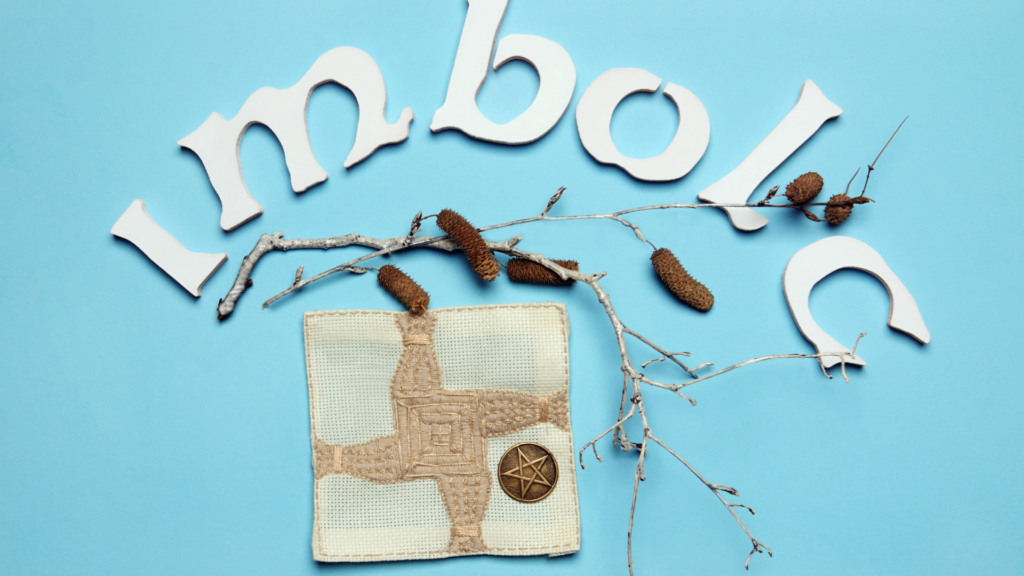 Whether you celebrate Imbolc, St. Brigid’s Day, Candlemas, Groundhog’s Day, or all of them, the beginning of February is a busy time on the calendar. So where did these all originate?
Whether you celebrate Imbolc, St. Brigid’s Day, Candlemas, Groundhog’s Day, or all of them, the beginning of February is a busy time on the calendar. So where did these all originate?
I’ll start with the easy one; Groundhog’s Day. This celebration began in the United States in 1887. It seems to have nothing to do with the others except being associated with the change of seasons. But can a groundhog really predict the end of winter? Who knows? The idea began as a stunt by a newspaper in Punxsutawney, Pennsylvania. They claimed it had German origins involving a badger. And while they have some unusual traditions here in Bavaria, none seem to involve wild animals. They celebrate Lichtmass, the equivalent of Candlemas, on February 2nd, a holiday grounded in the Roman Catholic church. Traditionally, it was a day off from work here in Germany until 1912.
Candlemas, also celebrated on February 2nd, is a Christian holiday marking Mary’s purification ritual forty days after her son’s birth. Its name comes from England and applies to the blessing of the candles before Holy Mass. However, it dates back to the Orthodox Pope Sergius (687-701), who created the tradition of holding a candlelight procession for this feast.
 Imbolc and St. Brigid’s Day are tougher to pin down, so I’ll give the most accepted versions. Imbolc was first mentioned in Ireland in the 10th century, in the form of a poem relating to ewe’s milk. The word imbolc has Gaelic roots and a variety of spellings, but it essentially means ‘in the belly’ and refers to the lactation of sheep and the imminent lambing season. Modern linguists, such as Eric P. Hamp, believe it derives from the word embibolgon, meaning budding or the change of seasons, in the early Proto-Celtic language spoken in Central Europe.
Imbolc and St. Brigid’s Day are tougher to pin down, so I’ll give the most accepted versions. Imbolc was first mentioned in Ireland in the 10th century, in the form of a poem relating to ewe’s milk. The word imbolc has Gaelic roots and a variety of spellings, but it essentially means ‘in the belly’ and refers to the lactation of sheep and the imminent lambing season. Modern linguists, such as Eric P. Hamp, believe it derives from the word embibolgon, meaning budding or the change of seasons, in the early Proto-Celtic language spoken in Central Europe.
Early on, this was celebrated as one of the Celtic quarter days, falling halfway between the Winter Solstice and the Spring Equinox. Calculated astronomically, it could fall anywhere between February 2nd and 7th. In modern times, it is celebrated on February 1st.
While this holiday later took on the connection to the goddess Brigid in Ireland, there are indications its roots are much older. The people who came to Ireland from Central Europe came from farming and herding traditions and would have brought their beliefs and rituals with them. Neolithic sites, such as the Mound of the Hostages at Tara, are aligned on the sunrise on this date. There are several passage tombs with this alignment, along with Samhain at the end of the year. Newgrange, among others, is aligned with the Winter Solstice. The ancient people understood this change of seasons and the astronomical connections.
 Brigid is one of the foremost goddesses in the Irish pantheon, the daughter of the Dagda, the oldest of these gods. Her powerful energy restored the earth for spring planting. She was the goddess of inspiration, healing, poetry, and smithcraft.
Brigid is one of the foremost goddesses in the Irish pantheon, the daughter of the Dagda, the oldest of these gods. Her powerful energy restored the earth for spring planting. She was the goddess of inspiration, healing, poetry, and smithcraft.
With the coming of Christianity, the Catholic Church claimed St. Brigid was a historical figure stating that monks wrote an account of her existence in the 8th century. However, no mention of her from that time exists today. She became the patron saint of nuns, midwives, newborns, and dairy maids. Her feast day is February 2nd. The difference in dates between St. Brigid’s Day and Imbolc could be attributed to the idea that the Celtic day started in the evening, and, therefore, would be from sundown on the 1st to sundown on the 2nd.
Many of the customs associated with the day were not recorded until modern times, so it is impossible to know their origins. But the rituals of weaving St. Brigid crosses and hanging them over the door, welcoming her into the home on the eve of St. Brigid’s Day, or visiting a holy well may date much further back.
Our village received a fair amount of snow the last few days, but I’ll take that over the bitter cold and harsh winds of the preceding week. With more snow in the forecast, I look forward to the coming of spring and the baby lambs.
